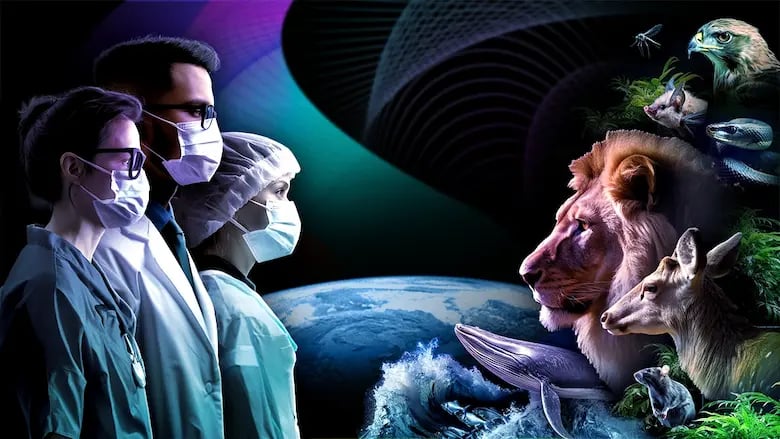One Health is an essential concept and practice for the longevity of human life on Earth. Understanding how to work in conjunction with animals and the environment, not only on a local level but at a global level, is key to global environmental sustainability.

One Health is the concept that recognizes the interconnectedness of human, animal, and environmental health. It states human health is closely linked to the well-being of animals and the environment, and that solutions to health challenges must consider the interdependent relationships between them.
Human health is closely linked to and dependent upon the health of animals and the environment, and solutions to health challenges must consider the interdependent relationships between them. This approach is particularly relevant to emerging infectious diseases that may have environmental or animal origins.
The health of the environment can impact the health of both humans and animals. The One Health approach seeks to promote a holistic understanding of health and to address challenges through a coordinated and integrated approach.

The One Health initiative does not just consider the health of the human race but also works toward a cohesive, harmonious coexistence between animals and every level of the environment and its ecosystems. This approach addresses complex health challenges that affect the human race, but also creates solutions for animals and the environment for sustainable health through all three pillars of global health.
This comprehensive approach recognizes it’s not just about humans, which is what makes it an essential concept for the future of global health.
Here is a breakdown of why the One Health concept will make a difference in the future of global health:
Enhance better overall global health
Reduce antimicrobial resistance
Improve the safety of food and water
Protect biodiversity and conservation

Biomeme’s purpose is to create decentralized testing solutions that offer rapid results so researchers and clinicians can take proactive measures to preventing and treating illnesses. We know that by maintaining better human, environmental, and animal health and creating elegant molecular (real-time PCR and isothermal) detection solutions to enable DNA/RNA analysis at a molecular level, people are empowered with a more comprehensive understanding of infectious diseases that plague all three levels of One Health: humans, animals, and the environment. By staying ahead of issues with our testing and technologies, we are able to prevent pathogenic bacteria, viruses, fungi, parasites, and vectors from developing resistance and/or spreading to other parts of an ecosystem, which would inevitably be detrimental on a global level.
Over the past few years, the world has recognized the importance of pandemic preparedness and taken significant steps towards it. At Biomeme, we are committed to improving human, animal, and environmental health by deeply understanding the interconnectivity of these three pillars. As a result, we have developed state-of-the-art molecular testing solutions for emerging infectious diseases like SARS-CoV-2, providing precise and dependable results. Our focus now is on advancing this technology further and exploring the potential of Host Response in diagnostics. Our initial goal is to assist healthcare professionals in distinguishing between bacterial and viral infections, reducing unnecessary antibiotic use and aiding in the fight against antibiotic resistance.
At Biomeme, working to support One Health is more than just a mission—it’s our reality. Our current and in-development testing products enable fast, reliable detection of critical pathogens and illnesses conditions in humans, animals, and in the environment.
Biomeme’s support of One Health is initially intended to address and benefit the health of humans, animals, and the environment in these two key ways:
Biomeme works in conjunction with WHO, the CDC, the FDA, and other federal organizations to create a One Health framework now and in the future. Without these collaborations, a better global health would not be possible.
Our mission is to empower researchers and clinicians by providing molecular-level results to enhance human, environmental, and animal health. This approach allows us to gain a comprehensive understanding of infectious diseases, covering humans, animals, and the environment. Our proactive testing and cutting-edge technologies are crucial in preventing the spread of bacteria and viruses in ecosystems. However, we are also focused on advancing Host Response technology to help healthcare professionals differentiate between bacterial and viral infections, reducing unnecessary antibiotic use and combating antibiotic resistance.

When people think about global health, they tend to think about far-flung locales and communities of people different...
401 North Broad St Suite 222 Philadelphia, PA 19108